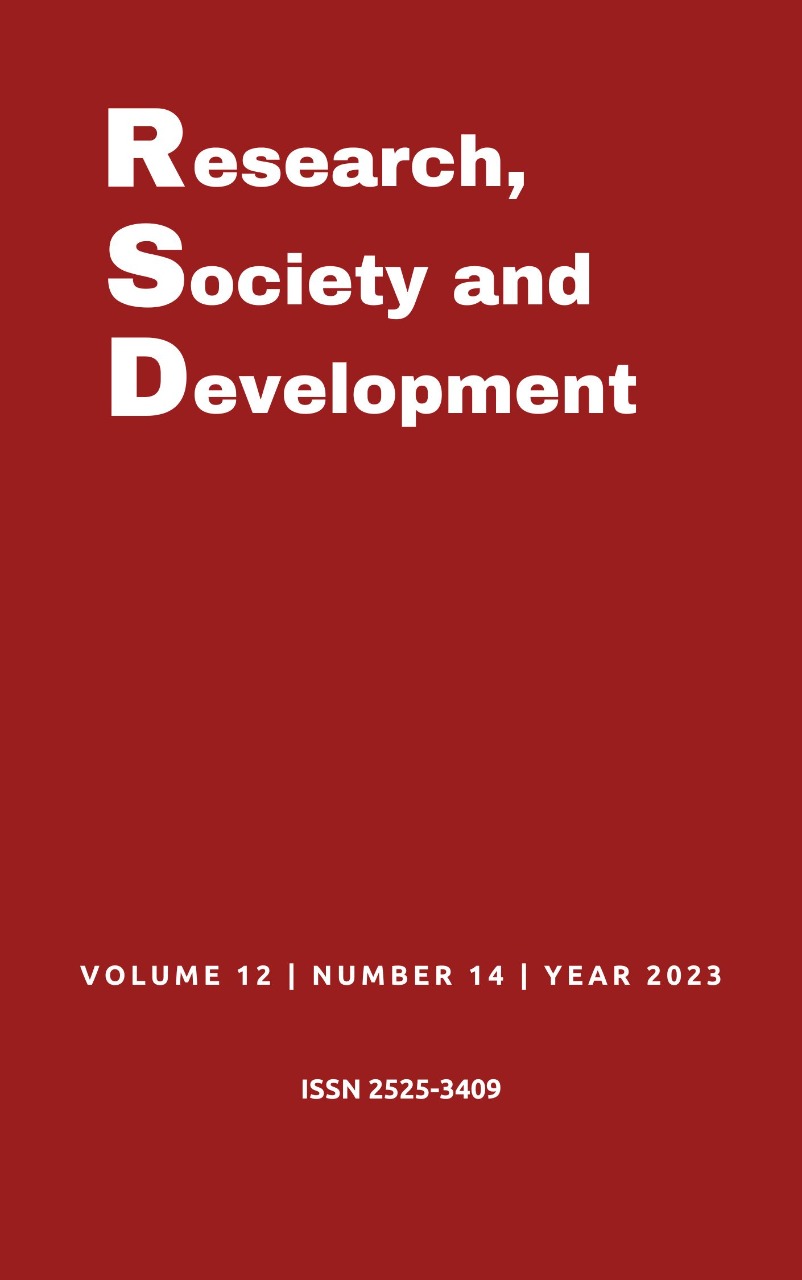Study on occurrences and risk factors for surgical site infection in surgeries and after hospitalization
DOI:
https://doi.org/10.33448/rsd-v12i14.44451Keywords:
Hypoxia, Fibrin, Prostheses, Implants.Abstract
Introduction: The article addresses surgery as a mechanism of risk, highlighting the breach of the body's first line of defense and the consequent increase in the likelihood of infections. The concern is heightened by the high rates of morbidity, mortality, and significant costs associated with such infections, impacting the economy and the patients' quality of life. Methodology: The research consists of a systematic literature review, analyzing articles from the last ten years about infections at surgical sites across various surgical specialties and after hospitalization. A hypothetical/deductive method with a quantitative approach was used, consulting databases like LILACS and SCIELO. Results and Discussion: A national study identified a surgical site infection rate of 11%. Most samples indicated a rate below 10%, suggesting a reduction in these infections in Brazil. However, the possibility of underreporting of these cases emerged. It was observed that the monitoring of the occurrence of surgical site infections is limited, in many Brazilian hospitals, to the duration of hospitalization, without systematic post-discharge follow-up. Staphylococcus aureus was highlighted as the most common microorganism in surgical site infections. Conclusion: The study concludes that continuous monitoring and data dissemination on infections are vital for improving patient surgical safety. The necessity for more effective prevention and treatment strategies, including epidemiological surveillance and post-discharge follow-up, is emphasized. The research points to the importance of future interventions so that the knowledge acquired by the entire surgical team can be utilized for the benefit of patient safety.
References
Agência Nacional de Vigilância Sanitária. (2017). Medidas de prevenção de infecção relacionada à assistência à saúde.
Aragão, J. M. N, Funez, M. I., & Hermann, P. R. S. (2013). Infecção do sítio cirúrgico em pacientes submetidos à colecistectomia convencional e videolaparoscópica em Hospital Regional do Distrito Federal: identificação do momento de diagnóstico e incidência. Trabalho de Monografia realizado na Universidade de Brasília – UnB Faculdade de Ceilândia – FCE.
Barbosa et al. (2011). Ocorrência de infecção de sítio cirúrgico em cirurgias de urgência e emergência. Revista Mineira de Enfermagem. Volume (15), 254-258. http://www.revenf.bvs.br/scielo.php?script=sci_arttext&pid=S1415-27622011000200014&lng=es&tlng=pt.
Burgatti, J. C., & Lacerda, R. A. (2009). Revisão sistemática sobre aventais cirúrgicos no controle da contaminação e infecção do sítio cirúrgico. Revista da Escola de Enfermagem da USP. 43. https://doi.org/10.1590/S0080-62342009000100031
Centers for Disease Control and Prevention. (2016). Procedure-Associated Module: surgical site infection event. CDC Atlanta.
Croco, E. L., & Nakagawa, C. (2008). Uso de antibioticoprofilaxia em cirurgia. Revista Da Faculdade De Ciências Médicas De Sorocaba, 10(3), 30. Recuperado de https://revistas.pucsp.br/index.php/RFCMS/article/view/1010.
Fan, F. S. Y., et al. (2021). Neurological diseases and risk of mortality in patients with COVID-19 and SARS: a territory-wide study in Hong Kong. Journal of Neurology, Neurosurgery and Psychiatry. 92(12), 1356–1358. https://doi.org/10.1136/jnnp-2021-326286
Franco, L. M. C., Ercole, F. F., & Mattia, A. (2015). Infecção cirúrgica em pacientes submetidos a cirurgia ortopédica com implante. Rev SOBECC. 20(3), 163–170. Recuperado de https://revista.sobecc.org.br/sobecc/article/view/87.
Gomes, A. E. B., et al. (2014). Predictive factors of post-discharge surgical site infections among patients from a teaching hospital. Revista da Sociedade Brasileira de Medicina Tropical. 47(2), 235–238. https://doi.org/10.1590/0037-8682-0069-2013.
Gonçalves, R. C. da S., et al. (2019). Teoria e prática na prevenção da infecção do sítio cirúrgico. Revista de Enfermagem UFPE. 13(2019). https://doi.org/10.5205/1981-8963.2019.241832
Martins, M. A., et al. (2008). Vigilância pós-alta das infecções de sítio cirúrgico em crianças e adolescentes em um hospital universitário de Belo Horizonte, Minas Gerais, Brasil. Cadernos de Saúde Pública. 24(5), 1033–1041. https://doi.org/10.1590/S0102-311X2008000500010.
Martins, T., et al. (2018). Fatores de risco para infecção do sítio cirúrgico em cirurgias potencialmente contaminadas. Texto & Contexto - Enfermagem. 27(3), e2790016. https://doi.org/10.1590/0104-070720180002790016.
Oliveira, A. C. de, & Gama, C. S. (2014). Evaluation of surgical glove integrity during surgery in a Brazilian teaching hospital. American Journal of Infection Control. 42(10), 1093–1096. https://doi.org/10.1016/j.ajic.2014.06.021.
Roscani, A. N., et al. (2015). Validação de checklist cirúrgico para prevenção de infecção de sítio cirúrgico. Acta Paulista de Enfermagem. 28(6), 553–565. https://doi.org/10.1590/1982-0194201500092.
Senne, E. C. V. de. (2015). Avaliação de prevalência e fatores associados à infecção de sítio cirúrgico em colecistectomia videolaparoscópica antes e após a implantação da vigilância pós-alta. Liph Science, 2(3), 126-191.
Souza, I. S. B. de, Santana, A. C. de, & Júnior, G. D. (2018). A ocorrência de infecção do sítio cirúrgico: um estudo de revisão. Revista Médica de Minas Gerais. 28(5), 2238-3182. https://dx.doi.org/10.5935/2238-3182.20180133.
Downloads
Published
Issue
Section
License
Copyright (c) 2023 Sebastião Danilo Vaz do Rêgo; Jorlan da Silva Oliveira Filho; Talycio Nazareth Pereira de Sousa; Italo Macedo Pires

This work is licensed under a Creative Commons Attribution 4.0 International License.
Authors who publish with this journal agree to the following terms:
1) Authors retain copyright and grant the journal right of first publication with the work simultaneously licensed under a Creative Commons Attribution License that allows others to share the work with an acknowledgement of the work's authorship and initial publication in this journal.
2) Authors are able to enter into separate, additional contractual arrangements for the non-exclusive distribution of the journal's published version of the work (e.g., post it to an institutional repository or publish it in a book), with an acknowledgement of its initial publication in this journal.
3) Authors are permitted and encouraged to post their work online (e.g., in institutional repositories or on their website) prior to and during the submission process, as it can lead to productive exchanges, as well as earlier and greater citation of published work.


